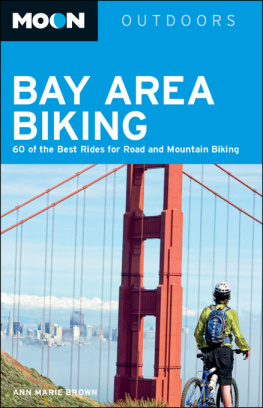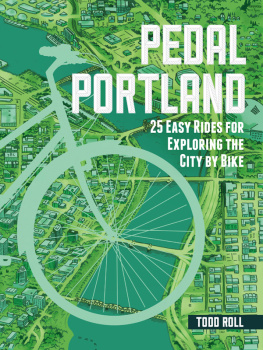Martn Fernndezs love for cycling goes way back, but it really flourished when he was in the US Army and stationed at Fort Myer along the perimeter of Arlington National Cemetery. Those early-morning PT rides through Arlington National Cemetery and over the Memorial Bridge, then onto the National Mall, really cemented my love for the sport. Seeing the mist rise from the Potomac and riding along some of the most iconic monuments and memorials in the nations capital, with only my breath to keep me company, made me appreciate and love the sites that this city and its surrounding areas have to offer. There is no greater pleasure than exploring your home aboard two wheels. During that time Martn also found the joys of off-road cycling and became heavily involved with the Mid-Atlantic Off-Road Enthusiasts (MORE).
Martn is a Level 1 PMBIA (Professional Mountain Bike Instructors Association) Instructor.
Learn more about Martn, including more of the places he loves to ride, at www.bestridesdc.com.
Its hard to imagine putting together a guidebook like this without help. And that is precisely the case with this one. I couldnt have done it alone. This book would not have been possible without direct and indirect assistance from a multitude of individuals and organizations.
Every member of the Mid-Atlantic Off-Road Enthusiasts (MORE), especially the dedicated group of Trail Liaisons, who ensure we have quality and sustainable off-road destinations in the Washington, DC, metro area.
The Washington Area Bicycle Authority (WABA). Thanks to WABA, there are hundreds of miles of routes that can be enjoyed by everyone, and thanks to them, we have a voice that has helped turn Washington, DC, into a Cycling City in less than a decade.
Without the tireless efforts and encouragement from some individuals, this book would not have been possible either, and one rises above the rest, my loving wife, Courtney, without whom not a single word in this book would have been possible.
And to you, for picking this book up and setting out to discover the joys that can be found on two wheels, keep the rubber side down, and see you on the trail, or the road.
Here is a short list of the many organizations that make the Washington, DC, region a great place to ride a bike.
Bike Arlington
www.bikearlington.com
Bike Arlington offers bike education and encouragement. Its mission is to make it easy to get around Arlington by bike.
Bike Maryland
www.bikemaryland.org
Bike Maryland represents all bicyclists in its efforts to create a state thats fun and safe to ride in.
Capital Bikeshare
www.capitalbikeshare.com
Pick up a bike at one of hundreds of stations around the metro DC area.
Fairfax Alliance for Better Bicycling
https://fabb-bikes.org
A volunteer organization that works to make bicycling fun, safe, and accessible for people of all ages in Fairfax County, Virginia.
League of American Bicyclists
www.bikeleague.org
The League of American Bicyclists represents bicyclists in the movement to create safer roads, stronger communities, and a bicycle-friendly America.
Maryland Interscholastic Cycling League
https://marylandmtb.org
The Maryland Interscholastic Cycling League was organized in 2017 to provide a fun, safe, and high-quality mountain biking program for students in grades 6 to 12.
Mid-Atlantic Off-Road Enthusiasts (MORE)
https://more-mtb.org
MORE is a nonprofit organization representing thousands of Washington, DC, Maryland, and northern Virginia mountain bikers.
Washington Area Bicycle Association (WABA)
https://waba.org
WABA envisions a region in which biking is joyful, safe, popular, and liberating; supported by the necessary infrastructure, laws, activities, and investments; and where bicycle ridership mirrors the incredible diversity of our communities.
This ride will take you by some of our nations most iconic monuments and memorials. I highly recommend you do this ride during the early-morning hours, when crowds and the noise of autos en route to area offices are sparse.
Start: Intersection of Ohio Drive SW and West Basin Drive SE
Distance: 5.0-mile lollipop loop
Riding time: Highly dependent on your sightseeing
Best bike: Any bike
Terrain and surface type: Mostly flat, paved bike paths and the gravel paths of the National Mall
Highlights: Monuments and memorials along the National Mall
Hazards: Other users, Segways, and DC traffic
Other considerations: The National Mall can get pretty crowded on a beautiful spring/summer day. Bring a bike lock!
Maps: USGS Washington West and Alexandria, VA
Getting there: From the George Washington Memorial Parkway, take the Memorial Bridge to Ohio Drive to West Basin Drive. There is ample parking along both sides of Ohio Drive SW; bear in mind, however, that parking will be harder to come by the later in the day you arrive. GPS: N38 53.026' / W77 02.783'
The Ride
Washingtons original architect, Pierre LEnfant, envisioned a grand central avenue that would serve as a central axis and anchor all avenues in our nations capital. In his plan, LEnfant proposed several avenues that radiated from the capitals most important structures, among them the presidents home and the Capitol building. His Grand Avenue would be a place of general resort and public walks, a place that would represent the grandeur of the new nation and highlight the power of its people. LEnfants vision would never be fully implemented; however, his designs and ideas eventually took the form of the National Mall as we know it today.
When the cornerstone for the Washington Monument was laid in 1848, the area looked much different than it does today. The Washington Monument was erected on the waterfront at the confluence of the Potomac River and the Washington City Canal. In 1881, after the great flood of Washington, which inundated much of what is now the Mall, including the White House, the US House Committee on the District of Columbia appropriated $1 million to reclaim the Potomac. Silt was laboriously dredged from the river by the US Army Corps of Engineers, and then deposited west and south of the Washington Monument, creating nearly 700 additional acres of land.
In 1901, Senator James McMillan and the Senate Committee for the District of Columbia established the Senate Park Commission. The commissions primary mission was to restore LEnfants original vision for the Mall. The McMillan Plan was to nearly double in size LEnfants original plan, taking advantage of the new land that had been created by the Army Corps of Engineers. The new plan laid out the foundation of what the Mall would become today, Americas front yard.
LEnfants plans roughly outlined a rectangular area that extended from the west steps of the Capitol to a portion of land extending west of the Washington Monumentnot quite reaching the grounds of what is now the reflecting poolwhich was then the waterfront. McMillans twentieth-century plan extended that vision to include the White House to the north, the Jefferson Memorial to the south, the Lincoln Memorial to the west, and the entire Capitol grounds to the east. McMillans plan also took into account the surrounding areas, including parkways and other memorials and structures that would enhance the richness of the nations capital and the Mall itself.
Miles and Directions
There are a myriad of bike paths, sidewalks, and bike lanes in the vicinity of the National Mall available for cycling. The proposed route below will take you past some of DCs most iconic monuments and memorials and can be easily altered. Please remember, in some cases, you will be riding near or entering portions of national memorials dedicated to the memory of our fallen veterans; for many they are considered sacred ground. Out of respect, please dismount and walk your bike if entering any of them.





